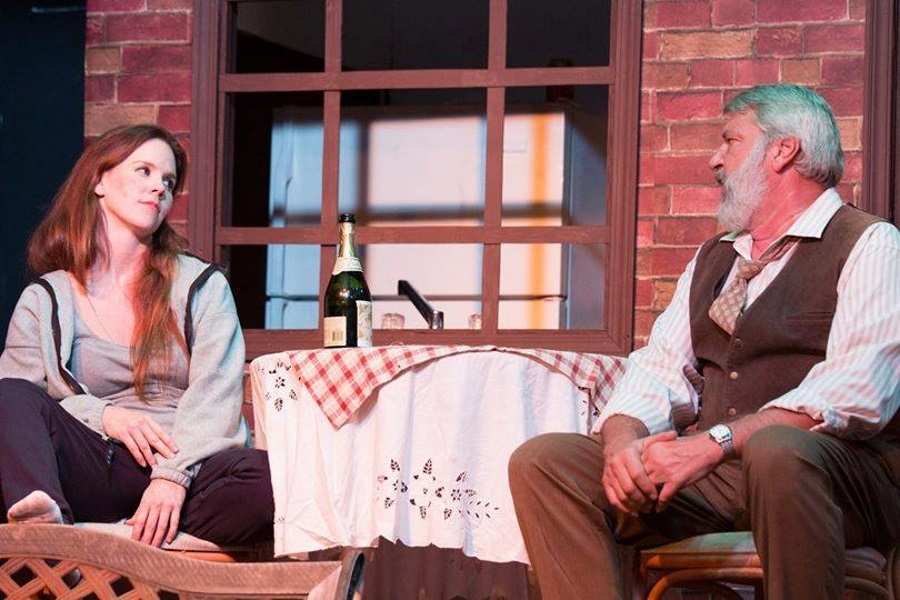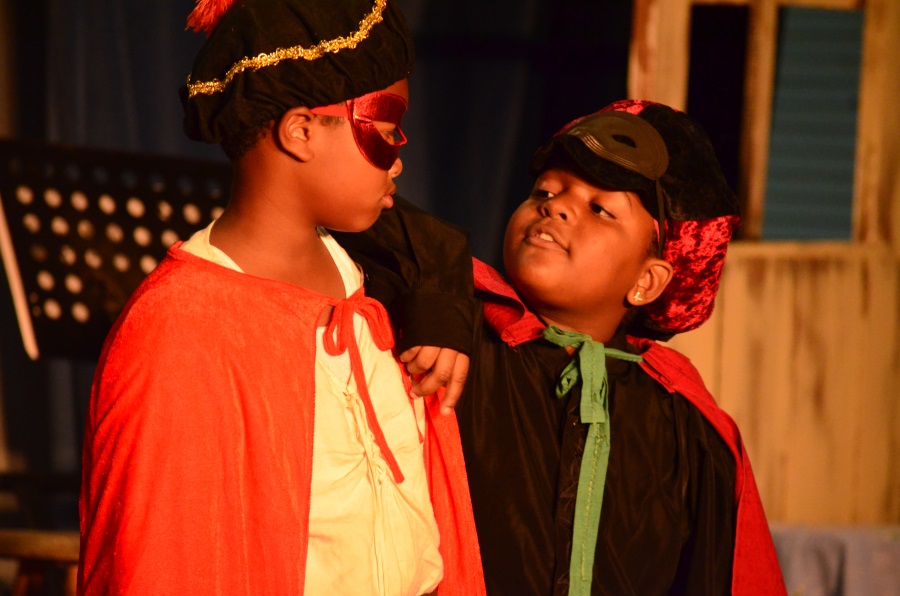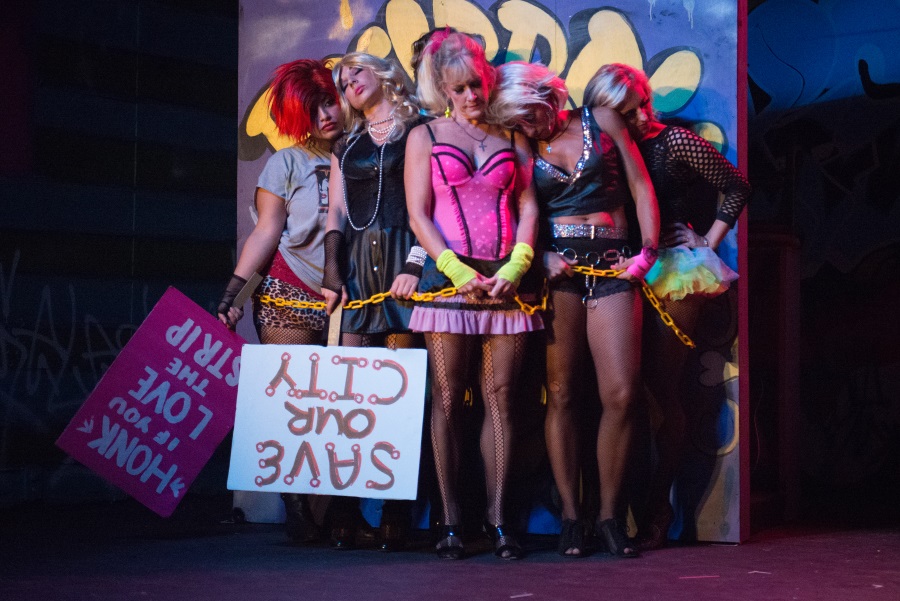TILLET GARDENS, ST. THOMAS: The island of St. Thomas is a vacation destination popular for snorkeling, recreational fishing, and landmarks like Blackbeard’s Castle. In addition to the island’s many tourist attractions, visitors and yearlong residents can find live entertainment at the only producing theatre with in 31 square miles, Pistarckle Theater. Appropriately enough, the two-decade-old company’s name comes from a Virgin Islands creole word meaning “boisterous commotion.”
Pistarckle produces five to six shows a season and offers after-school and summer education programs. Less than two miles to the Atlantic Ocean, the performance venue is situated in Tillets Gardens, an outdoor garden and community for local and traveling artists. We caught up with founding artistic director Nicola Barthen-Emerich via email to learn more about the theatre’s year-round programming and about what it’s like to create theatre in a vacation spot.
Who founded Pistarckle Theater, when, and why?
When I arrived in St. Thomas, U.S. Virgin Islands in 1988, I discovered that the island’s only existing theatre had burned to the ground a few months earlier. For several years, I was distracted by my new daughter—but as the days wore on, I found I just could not happily continue living on an island without the creative outlet that theatre had always offered me.
Tell us about your theatre background before arriving in St. Thomas.
As an actress and producer, I had worked steadily since the early ’70s in the Washington, D.C. area, New York City, and Alaska. In 1980, I was asked to direct The Importance of Being Earnest for Perseverance Theater in Juneau. I stayed on to become that theatre’s producer while continuing to act as much as possible under Molly Smith, founder of Perseverance and my longtime favorite director. While in Juneau, I met my husband, and a year later we left Juneau to start our new life together in New York; our daughter was born there in 1987. Soon thereafter we moved to St. Thomas, meaning to return to New York after two years. However, my husband’s company grew and our daughter thrived in St. Thomas, so we decided to make the island our home. But, as I was faced with a fairly barren artistic life in St. Thomas, I decided to start a theatre of my own. In 1993 Pistarckle Theater, Inc. began operations as a dinner theatre in an outdoor venue, Coral World Ocean Park.

Tell us about yourself and your connection to your theatre.
Immediately after college I trained with Joy Zinoman, founder of Studio Theatre in Washington, D.C. She gave me a deep understanding of acting, which I never really fully got at college. I attended Catholic University Speech and Drama, studied acting at Briarcliff College, attended Columbia University for a summer acting program, and London University for film and stage movement. I was even the president of my high school’s drama club! After leaving Catholic University in 1970, I started to audition in the D.C. area and immediately found work. My entire working life has been in the theatre. It is really all I ever wanted to do.
What sets your theatre apart from others in your region?
We are a joyful theatre! St. Thomas does have an outdoor venue, the Reichhold Center for the Arts, which presents seasonal offerings of music and dance productions brought in from the mainland. However, Pistarckle is the only producing theatre on the island. We offer a season subscription of five plays and musicals and run a very busy theater enrichment program aimed at youth ages 9 and up. Each summer, we offer a six-week musical theatre summer camp and a four-week playwriting camp. After-school classes in acting, speech, singing, and dance are given in the fall, followed by a Christmas play starring all the youth who attended classes in addition to others from the community at large.
In 2005, we created an annual Shakespeare Festival and competition, which grew to involve all area schools from the three islands comprising the U.S. Virgin Islands (St. Thomas, St. John and St. Croix). The festival challenges students to select, produce, and present a 10-minute scene selected from Shakespeare’s canon. All students and their teachers convene on Shakespeare’s birthday at Pistarckle Theater to compete among each other for the best produced scene, as well as best actress/actor awards. The event has become so large that in 2016 we will move the competition to a nearby school, Virgin Islands Montessori School and Peter Gruber International Academy, which boasts a new outdoor theatre.
Who is your audience?
Our audience is comprised of local residents, visiting snowbirds (visitors from northern climes), and youth from both the U.S. and British Virgin Islands.
Tell us about your favorite theatre institution other than your own, and why you admire it.
My favorite theatre institution is the National Theater in London. Their work is broad, intelligent, and their actors are great. And they use multiple stages, all of which are completely different. I love the atmosphere.

How do you pick the plays you put on your stage?
Our resident director, Frank Bartolucci, offers a basic season based on our acting pool and ability to produce, which includes two musicals, a comedy, a drama, and a Christmas production cast with children enrolled in our after-school classes. The board and I review the proposed season. This year we are adding a world premiere, Sad Mangoes, written by a local playwright, Stacy Bryan. The play is based in St. Thomas, and tells the story of her family. Last season we initiated a new playwrights festival for both children and adults; the only caveat is that the playwrights must come from the Virgin Islands. Sad Mangoes came out of the festival, so I am looking forward to including more originals from our community.
What’s your annual budget, and how many artists do you employ each season?Our annual budget is about $345,000. Pistarckle Theater works with 39 actors, 3 music directors, 6 scenic artists, and 3 stage directors each season.
What show are you working on now? Anything else in your season that you’re especially looking forward to?
Rock of Ages, a huge musical offering roles to our dancers, band members, and singers, running through Oct. 24. Ticket sales show a broad attendance from age 15 and up, and adults from their late 20s to the elderly. In particular, I am looking forward to Sad Mangoes. In the past, we have produced new plays based on West Indian history and events, such as Queen Coziah and Queen Breffu. But Sad Mangoes is a contemporary play about one family’s journey. The work will be very interesting to produce as we reach deep into our community.
Strangest or funniest thing you’ve ever seen (or put) on your stage?
Little Shop of Horrors and The Complete Works of William Shakespeare (Abridged).
What are you doing when you’re not doing theatre?
I visit my newly married daughter and son-in-law in South Carolina, and my son, a senior at Penn State. Both are nuclear engineers. Neither one wants to do theatre! I also visit friends in New York and Washington D.C., where I see as much theatre as possible. In that vein, I occasionally manage a trip to London. In St. Thomas, I volunteer at a horse rescue stable and sail with my husband.
What does theatre—not just your theatre, but the American or world theatre—look like in, say, 20 years?
I would like to see theatre, full productions, happen in found environments. The element of surprise in an unexpected space would be so refreshing. For example: Put A Streetcar Named Desire in an abandoned house in the middle of an active neighborhood. And, of course, all casts would be completely mixed. Let’s see where that takes us.


